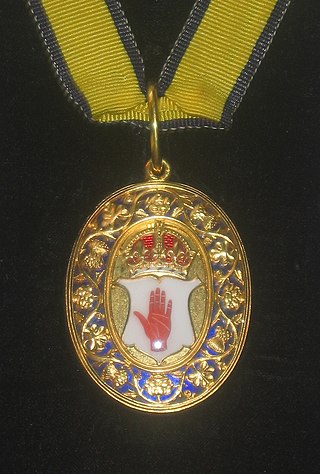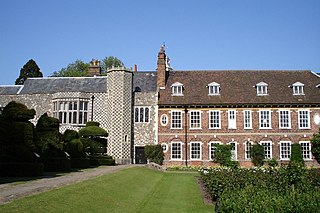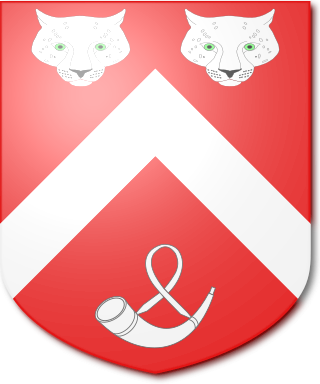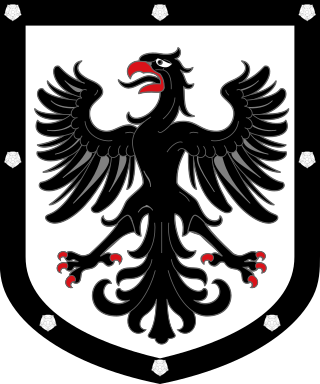
A baronet or the female equivalent, a baronetess, is the holder of a baronetcy, a hereditary title awarded by the British Crown. The title of baronet is mentioned as early as the 14th century; however, in its current usage it was created by James I of England in 1611 as a means of raising funds for the crown.
There have been four baronetcies created for persons with the surname Leslie, one in the Baronetage of Nova Scotia, one in the Baronetage of Ireland, one in the Baronetage of Great Britain and one in the Baronetage of the United Kingdom. Three of the creations are extant as of 2010.
Nineteen baronetcies have been created for persons with the surname Hamilton, eight in the Baronetage of Nova Scotia, one in the Baronetage of England, five in the Baronetage of Ireland, one in the Baronetage of Great Britain and four in the Baronetage of the United Kingdom. As of 2008 two creations are extant, two are dormant, two are either extinct or dormant and twelve extinct.

There have been two Baronetcies created for persons with the surname Austen, one in the Baronetage of England and one in the Baronetage of Great Britain. Both creations are extinct.

There have been four baronetcies created for persons with the surname Hope, three in the Baronetage of Nova Scotia and one in the Baronetage of the United Kingdom. As of 2010 one creation is extant, one dormant and two extinct.
There have been four baronetcies created for persons with the surname Preston, two in the Baronetage of Nova Scotia, one in the Baronetage of England and another in the Baronetage of the United Kingdom.
There have been two baronetcies created for persons with the surname Nairne, one in the Baronetage of Nova Scotia and one in the Baronetage of the United Kingdom.

There have been two baronetcies created for members of the Scottish Pringle family, one in the Baronetage of Nova Scotia and one in the Baronetage of Great Britain. As of 2023, one creation is extant.
There have been four baronetcies created for persons with the surname Seton, all in the Baronetage of Nova Scotia. As of 2008 one creation is extant, one dormant and two extinct.

There have been five baronetcies created for members of the old established family of Peyton of Peyton Hall in the parish of Boxford in Suffolk, all of whom were descended from Sir Robert Peyton of Isleham in Cambridgeshire, grandson and heir of Thomas Peyton (1418–1484) of Isleham, twice Sheriff of Cambridgeshire and Huntingdonshire, in 1443 and 1453. All the baronetcies are extinct.
There have been two Baronetcies created for persons with the surname Strachan, both in the Baronetage of Nova Scotia. Both are currently either extinct or dormant.

There have been four baronetcies created for members of the Slingsby family who settled at Scriven Hall, Scriven, Knaresborough, Yorkshire in the 14th century.

There have been three baronetcies created for persons with the surname Meredith, one in the Baronetage of England, one in the Baronetage of Nova Scotia and one in the Baronetage of the United Kingdom. Two of the creations are extinct while one is dormant.

There have been three baronetcies created for persons with the surname Carmichael, two in the Baronetage of Nova Scotia and one in the Baronetage of the United Kingdom.

The James Baronetcy, of Park Farm Place in Eltham in the County of Kent, was created in the Baronetage of Great Britain on 27 August 1778 for the naval commander William James. The title became extinct on the death of the second Baronet in 1792.
The Dalmahoy Baronetcy, of Dalmahoy, was a title created in the Baronetage of Nova Scotia on 2 December 1679 for John Dalmahoy of that Ilk. The title became extinct upon the death of the fourth baronet, Sir Alexander Dalmahoy, in 1800.
The Mure Baronetcy, of Rowallan was a baronetcy created on 4 May 1662 in the Baronetage of Nova Scotia for Patrick Mure, a younger son of Sir William Mure. The title became extinct upon the death of the first baronet in 1700.
The Weir Baronetcy, of Blackwood was a title in the Baronetage of Nova Scotia created on 28 November 1694 for George Weir. He was succeeded by his sons, the second and third baronets. The baronetcy became extinct on the death of the third baronet in 1735.

The Ramsay baronetcy, of Whitehill in the County of Edinburgh, was created in the Baronetage of Nova Scotia on 2 June 1665 for John Ramsay. The title became extinct on the death of the fifth Baronet in 1744.










